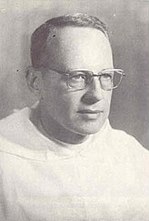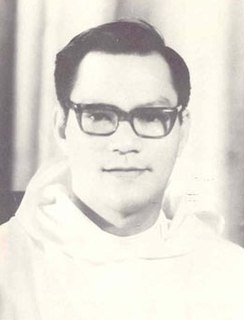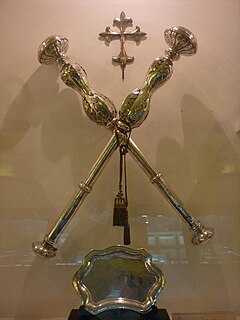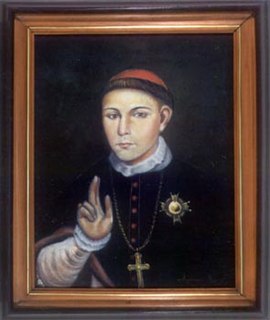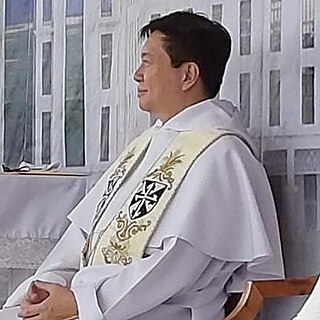| — | — | 1646–1648 | Fr. Francisco de Paula, O.P. |
|---|
| 14 | 1 | 1648–1650 | Fr. Martin Real de la Cruz, O.P. |
|---|
| 15 | 2 | 1650–1652 | Fr. Jeronimo de Zamora, O.P. |
|---|
| 16 | 3 | 1652–1654 | Fr. Felipe Pardo, O.P. |
|---|
| — | — | 1654–1656 | Fr. Felipe Pardo, O.P. |
|---|
| 17 | 4 | 1656–1657 | Fr. Francisco de Paula, O.P. |
|---|
| 18 | 5 | 1657–1659 | Fr. Pedro de la Fuente, O.P. |
|---|
| 19 | 6 | 1659–1661 | Fr. Andrés de Haro, O.P. |
|---|
| 20 | 7 | 1661–1663 | Fr. Juan de los Angeles, O.P. |
|---|
| 21 | 8 | 1663–1665 | Fr. Francisco Sánchez, O.P. |
|---|
| 22 | 9 | 1665–1667 | Fr. Diego de San Roman, O.P. |
|---|
| — | — | 1667–1669 | Fr. Diego de San Roman, O.P. |
|---|
| 23 | 10 | 1669–1671 | Fr. Juan de Paz, O.P. |
|---|
| — | — | 1671–1673 | Fr. Juan de Paz, O.P. |
|---|
| 24 | 11 | 1673–1675 | Fr. Baltasar de Santa Cruz, O.P. |
|---|
| — | — | 1675–1677 | Fr. Baltasar de Santa Cruz, O.P. |
|---|
| 25 | 12 | 1677–1678 | Fr. Juan de Paz, O.P. |
|---|
| 26 | 13 | 1678–1680 | Fr. Manuel de Mercadillo, O.P. |
|---|
| — | — | 1680–1682 | Fr. Manuel de Mercadillo, O.P. |
|---|
| 27 | 14 | 1682–1684 | Fr. Juan de Santa Maria, O.P. |
|---|
| 28 | 15 | 1684–1686 | Fr. Bartolome Marron, O.P. |
|---|
| 29 | 16 | 1686–1690 | Fr. Raimundo Berart, O.P. |
|---|
| — | — | 1690–1692 | Fr. Raimundo Berart, O.P. |
|---|
| 30 | 17 | 1692–1694 | Fr. José Vila, O.P. |
|---|
| — | — | 1694–1696 | Fr. José Vila, O.P. |
|---|
| 31 | 18 | 1696–1698 | Fr. Bartolome Marron, O.P. |
|---|
| — | — | 1698–1700 | Fr. Bartolome Marron, O.P. |
|---|
| 32 | 19 | 1700–1702 | Fr. Juan Ibañez, O.P. |
|---|
| 33 | 20 | 1702–1706 | Fr. Juan de Santa Maria, O.P. |
|---|
| 34 | 21 | 1706–1710 | Fr. Pedro Mejorada, O.P. |
|---|
| 35 | 22 | 1710–1713 | Fr. Francisco Ruiz, O.P. |
|---|
| 36 | 23 | 1713 | Fr. Francisco Gomez, O.P.^ |
|---|
| — | — | 1714–1716 | Fr. Francisco Gomez, O.P. |
|---|
| 37 | 24 | 1716–1718 | Fr. Francisco Barrera, O.P. |
|---|
| 38 | 25 | 1718–1721 | Fr. Cristobal Alonso, O.P. |
|---|
| 39 | 26 | 1721 | Fr. Juan Alvarez, O.P.^ |
|---|
| — | — | 1722–1723 | Fr. Juan Alvarez, O.P. |
|---|
| 40 | 27 | 1723–1725 | Fr. Antonio Varela, O.P. |
|---|
| 41 | 28 | 1725–1727 | Fr. Antonio Argollanes, O.P. |
|---|
| 42 | 29 | 1727–1729 | Fr. Cristobal Alonso, O.P. |
|---|
| 43 | 30 | 1729–1733 | Fr. José Perez, O.P. |
|---|
| 44 | 31 | 1733–1735 | Fr. Tomas Canduela, O.P. |
|---|
| 45 | 32 | 1735–1737 | Fr. Juan de Arechederra, O.P. |
|---|
| 46 | 33 | 1737–1740 | Fr. Diego Saenz, O.P. |
|---|
| 47 | 34 | 1741–1743 | Fr. Vicente de Salazar, O.P. |
|---|
| 48 | 35 | 1743–1745 | Fr. Juan de Arechederra, O.P. |
|---|
| 49 | 36 | 1745–1747 | Fr. Antonio Lavarias, O.P.^ |
|---|
| 50 | 37 | 1747–1751 | Fr. Bernardo Ustariz, O.P. |
|---|
| 51 | 38 | 1751–1753 | Fr. Juan Alvarez, O.P. |
|---|
| 52 | 39 | 1753–1755 | Fr. Francisco Carriedo, O.P. |
|---|
| 53 | 40 | 1755–1757 | Fr. Francisco Quintana, O.P. |
|---|
| 54 | 41 | 1757–1759 | Fr. Antonio Calonge, O.P. |
|---|
| 55 | 42 | 1759–1763 | Fr. Diego Serrano, O.P. |
|---|
| 56 | 43 | 1763–1765 | Fr. Joaquin del Rosario, O.P. |
|---|
| 57 | 44 | 1765–1767 | Fr. Miguel Garcia, O.P. |
|---|
| 58 | 45 | 1767–1769 | Fr. Lorenzo Sarroca, O.P.^ |
|---|
| 59 | 46 | 1769–1773 | Fr. Joaquin del Rosario, O.P. |
|---|
| 60 | 47 | 1774–1777 | Fr. Juan Fernandez, O.P. |
|---|
| 61 | 48 | 1777–1785 | Fr. Domingo Collantes, O.P. |
|---|
| 62 | 49 | 1786 | Fr. José Muñoz, O.P. |
|---|
| 63 | 50 | 1786–1789 | Fr. Pedro Martir Fernandez, O.P.^ |
|---|
| 64 | 51 | 1789–1794 | Fr. Nicolas Cora, O.P. |
|---|
| 65 | 52 | 1794–1798 | Fr. Domingo Bruno, O.P. |
|---|
| 66 | 53 | 1798–1800 | Fr. Antonio Robles, O.P. |
|---|
| 67 | 54 | 1800–1803 | Fr. Francisco Genoves, O.P. |
|---|
| 68 | 55 | 1806–1810 | Fr. José Burrillo, O.P. |
|---|
| 69 | 56 | 1810–1817 | Fr. Francisco Alban, O.P. |
|---|
| 70 | 57 | 1817–1825 | Fr. Carlos Abrea, O.P. |
|---|
| 71 | 58 | 1825–1826 | Fr. Francisco Genoves, O.P. |
|---|
| 72 | 59 | 1826–1828 | Fr. Carlos Abrea, O.P. |
|---|
| 73 | 60 | 1828–1829 | Fr. Francisco de Sales Mora, O.P. |
|---|
| 74 | 61 | 1829–1841 | Fr. Francisco Ayala, O.P. |
|---|
| 75 | 62 | 1842–1845 | Fr. Vicente Ayala, O.P. |
|---|
| 76 | 63 | 1845–1847 | Fr. Juan Ferrando, O.P. |
|---|
| 77 | 64 | 1847–1849 | Fr. José Fuixà, O.P. |
|---|
| 78 | 65 | 1849–1851 | Fr. Vicente Ayala, O.P. |
|---|
| 79 | 66 | 1851–1855 | Fr. Juan Bautista Reig, O.P. |
|---|
| 80 | 67 | 1855–1863 | Fr. Domingo Treserra, O.P. |
|---|
| 81 | 68 | 1863–1867 | Fr. Francisco Rivas, O.P. |
|---|
| 82 | 69 | 1867–1874 | Fr. Domingo Treserra, O.P. |
|---|
| 83 | 70 | 1874–1878 | Fr. Benito Corominas, O.P. |
|---|
| 84 | 71 | 1878–1880 | Fr. Joaquin Fonseca [ es; ast ], O.P. |
|---|
| 85 | 72 | 1880–1881 | Fr. Pedro Marcos, O.P. |
|---|
| 86 | 73 | 1881–1890 | Fr. Gregorio Echevarria, O.P. |
|---|
| 87 | 74 | 1890–1894 | Fr. Matias Gomez, O.P. |
|---|
| 88 | 75 | 1894–1900 | Fr. Santiago Paya, O.P. |
|---|
| 89 | 76 | 1900–1909 | Fr. Raimundo Velazquez, O.P. |
|---|
| 90 | 77 | 1910–1914 | Fr. José Noval, O.P. |
|---|
| 91 | 78 | 1914–1917 | Fr. Serapio Tamayo, O.P. |
|---|
| 92 | 79 | 1917–1923 | Fr. Acisclo Alfageme, O.P. |
|---|
| 93 | 80 | 1923–1926 | Fr. Manuel Arellano [ es ], O.P. |
|---|
| 94 | 81 | 1926–1936 | Fr. Serapio Tamayo, O.P. |
|---|
| 95 | 82 | 1936–1941 | Fr. Silvestre Sancho, O.P. |
|---|
| 96 | 83 | 1941–1944 | Fr. Eugenio Jordan, O.P.^ |
|---|
| — | — | 1944–1948 | Fr. Eugenio Jordan, O.P. |
|---|
| 97 | 84 | 1948–1952 | Fr. Angel de Blas, O.P. |
|---|
| 98 | 85 | 1953–1960 | Fr. Jesus Castañon, O.P. |
|---|
| 99 | 86 | 1960–1961 | Fr. Ciriaco Pedrosa, O.P.^ |
|---|
| 100 | 87 | 1961–1965 | Fr. Juan Labrador, O.P. |
|---|
| 101 | 88 | 1965–1970 | Fr. Jesús Diaz, O.P. |
|---|
| 102 | 89 | 1971–1977 | Fr. Leonardo Legaspi, O.P. |
|---|
| 103 | 90 | 1978–1982 | Fr. Frederik Fermin, O.P. |
|---|
| 104 | 91 | 1982–1986 | Fr. Norberto Castillo, O.P. |
|---|
| — | — | 1986–1990 | Fr. Norberto Castillo, O.P. |
|---|
| 105 | 92 | 1990–1994 | Fr. Rolando de la Rosa, O.P. |
|---|
| — | — | 1994–1998 | Fr. Rolando de la Rosa, O.P. |
|---|
| 106 | 93 | 1998–2002 | Fr. Tamerlane Lana, O.P. |
|---|
| — | — | 2002–2006 | Fr. Tamerlane Lana, O.P. |
|---|
| 107 | 94 | 2006–2007 | Fr. Ernesto Arceo, O.P. |
|---|
| 108 | 95 | 2007–2008 | Fr. Rolando de la Rosa, O.P.^ [8] |
|---|
| — | — | 2008–2012 | Fr. Rolando de la Rosa, O.P. [8] |
|---|
| 109 | 96 | 2012–2016 | Fr. Herminio Dagohoy, O.P. [9] |
|---|
| — | — | 2016–2020 | Fr. Herminio Dagohoy, O.P. [10] |
|---|
| 110 | 97 | 2020–present | Fr. Richard Ang, O.P. [2] |
|---|











